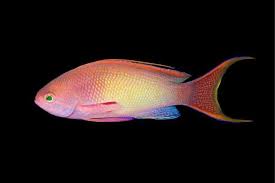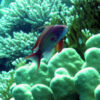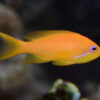Creative Dragon Artwork in the 21st Century: A New Era of Imagination and Innovation

The dragon, a mythical creature that has captured the human imagination for centuries, continues to be an enduring symbol in art, literature, and culture. In the 21st century, dragons have evolved beyond their traditional representations in ancient mythology and folklore. Contemporary artists have reimagined these powerful beings in a variety of styles, media, and contexts, creating dynamic and innovative artworks that explore the timeless fascination with dragons. This article will examine how creative dragon artwork in the 21st century has taken on new forms, reflecting cultural shifts, technological advancements, and personal expressions, all while maintaining the essential mystique and symbolism of the dragon.
1. The Evolution of Dragon Imagery in Contemporary Art
Dragons have long been a prominent feature in traditional art, particularly in Asian cultures, where they symbolize strength, wisdom, and good fortune. In the West, dragons are often associated with fire, destruction, and villainy, particularly in medieval and Renaissance depictions. However, the 21st century has seen a transformation in the portrayal of dragons, as contemporary artists move away from stereotypical representations and embrace new ways of interpreting these mythical creatures.
In the early 2000s, the rise of digital art and the accessibility of creative tools allowed artists to push the boundaries of their imagination. The use of software like Adobe Photoshop, Illustrator, and 3D modeling programs opened new possibilities for creating highly detailed and dynamic representations of dragons. These dragons, often depicted in vibrant colors and dramatic poses, represent a fusion of ancient myth and modern technology. Digital platforms also allow for the easy sharing and distribution of dragon art, enabling artists to reach global audiences and inspire one another.
Furthermore, artists have begun to explore the symbolic and emotional dimensions of dragons, incorporating them into contemporary themes such as personal growth, social justice, and environmental issues. In the 21st century, dragons are not just creatures of fantasy; they serve as metaphors for the challenges, fears, and aspirations that define the modern human experience.
2. Dragons in Digital Art: From Fantasy to Futurism
One of the most significant developments in the 21st-century dragon art scene is the rise of digital art. The ability to create hyper-realistic dragons through digital tools has led to an explosion of creative possibilities. Artists now have the freedom to design dragons with intricate details, dramatic lighting, and fantastical settings that were previously impossible with traditional media.
Digital platforms like DeviantArt, ArtStation, and Behance have become virtual galleries where artists showcase their work. These platforms are teeming with creative dragon art, ranging from photorealistic depictions to highly stylized, abstract representations. Some artists focus on depicting dragons in lush, natural environments, while others place them in futuristic, dystopian landscapes, reflecting the growing influence of science fiction in modern dragon imagery.
The work of artists such as Feng Zhu and Andrey Yurievich can be seen as examples of digital dragon art that combines fantasy with futuristic elements. Zhu, known for his conceptual design work in video games and films, often portrays dragons with mechanical elements, creating a hybrid between organic and technological forms. This trend of combining mythical creatures with advanced machinery speaks to the increasing interest in cyberpunk and steampunk aesthetics in contemporary art.
Additionally, virtual reality (VR) and augmented reality (AR) have opened up new frontiers for dragon artwork. VR experiences, such as those seen in immersive games like Skyrim or interactive art installations, allow users to experience dragons in a fully realized 3D space. In these environments, dragons are not static images; they are living, breathing entities that can interact with the viewer, creating a sense of awe and wonder. As technology continues to advance, the potential for even more interactive and immersive dragon artwork will only increase.
3. Dragons in Street Art: A Symbol of Rebellion and Transformation
Street art, a genre that has exploded in popularity in recent years, is another area where dragons have found a new home. Once confined to traditional mediums like painting and sculpture, the dragon has emerged as a symbol of rebellion, transformation, and self-expression in the urban art scene. Street artists often use the dragon as a metaphor for the power of transformation, challenging societal norms, and celebrating individual freedom.
The work of artists like KAWS, Banksy, and Shepard Fairey has had a profound impact on contemporary street art, and dragons have become a recurring theme in their work. These dragons are often depicted as larger-than-life figures, bursting forth from walls or towering over cityscapes. They are not just mythical creatures; they represent a force for change, pushing back against oppressive forces and symbolizing personal and societal transformation.
In street art, dragons are often depicted in a variety of styles, from graffiti tags and stencil art to elaborate murals. Some artists take inspiration from traditional Asian dragon imagery, incorporating elements of Chinese and Japanese art, while others create entirely new interpretations that blend dragon mythology with urban culture. These dragons, whether depicted in bright, bold colors or in monochromatic tones, convey a sense of energy and dynamism that is characteristic of the street art movement.
One particularly notable example of this is the work of the artist Roa, who creates large-scale murals of animals, including dragons, that appear to emerge from the walls themselves. His dragons often appear skeletal, symbolizing the fragility of life and the transitory nature of existence. These works explore themes of decay and renewal, underscoring the transformative power that dragons can symbolize in contemporary art.
4. Dragons in Contemporary Sculpture: Reimagining the Myth
Sculpture has also provided artists with a medium to explore the theme of dragons in new and exciting ways. Traditional sculptures of dragons have often been monumental in size, made from materials like stone or bronze. However, in the 21st century, sculptors are experimenting with a wide range of materials, techniques, and forms to reimagine dragons in both large and small-scale works.
One prominent trend in contemporary sculpture is the use of mixed media to create dragons that blend the natural and the artificial. For example, the work of sculptor David Breuer-Weil, known for his monumental sculptures, often features dragons made from industrial materials like metal, glass, and plastic. These dragons are designed to evoke a sense of both awe and unease, highlighting the tension between nature and technology. Breuer-Weil’s works, which often explore themes of power and destruction, use the dragon as a symbol of the uncontrollable forces of nature.
Other contemporary sculptors, such as the Japanese artist Yoshitoshi Kanemaki, create dragons using more organic materials like wood. Kanemaki’s sculptures, often carved from single pieces of wood, evoke a sense of both fragility and strength. His dragons appear to be in motion, their bodies twisting and contorting in dynamic, fluid shapes. These works explore the concept of transformation, emphasizing the idea that dragons are not static beings but living entities capable of change.
Sculptors in the 21st century are increasingly interested in creating interactive and participatory dragon art, where viewers can engage with the work physically. Some sculptures incorporate elements of movement, sound, and light, allowing the audience to experience the dragon in a multisensory way. These interactive sculptures are often designed to evoke emotions of fear, wonder, or empowerment, as they invite the viewer to confront their own ideas about power, transformation, and the unknown.
5. Dragons as Metaphors in 21st-Century Art
Beyond their visual appeal, dragons in contemporary artwork also serve as powerful metaphors for a wide range of social, political, and environmental issues. In a time of rapid technological advancement, climate change, and political unrest, dragons are increasingly used as symbols of both destruction and hope. Artists are using dragon imagery to comment on issues such as the fragility of the environment, the dangers of unchecked power, and the need for personal and collective transformation.
For example, in the works of environmental artists, dragons are often depicted as guardians of the natural world, embodying the forces of nature that are under threat from human activity. These dragons may be shown in battle with forces of industrialization, pollution, or environmental degradation, highlighting the struggle between nature and human intervention.
Similarly, in political artwork, dragons are sometimes used to represent the destructive forces of authoritarianism or the corrupting influence of power. These dragons, often depicted as menacing and malevolent, serve as a warning about the dangers of unchecked authority.
At the same time, dragons are also used as symbols of hope and resilience. In works that address social justice issues, dragons are often depicted as protectors of the oppressed, standing up against forces of oppression and injustice. These dragons embody the spirit of resistance and the belief that transformation is possible, even in the face of overwhelming adversity.
6. The Future of Dragon Art in the 21st Century
As we move further into the 21st century, the potential for creative dragon artwork seems limitless. Advances in technology, such as artificial intelligence, machine learning, and virtual reality, are already beginning to influence the creation of dragon art in exciting and unexpected ways. Artists are pushing the boundaries of what is possible, exploring new media and techniques to create dragons that are not only visually stunning but also conceptually rich.
In the future, we can expect to see even more interactive dragon art, as artists continue to experiment with virtual environments, augmented reality, and immersive experiences. These dragons will not be static images but dynamic, living creatures that viewers can engage with in new and exciting ways.
Moreover, the symbolism of dragons in contemporary art will continue to evolve as artists reflect the changing concerns of society. Dragons will remain powerful metaphors for transformation, power, and resistance, serving as a mirror to the world around us.
Conclusion
In the 21st century, dragon artwork has experienced a renaissance, with artists pushing the boundaries of imagination and creativity. From digital art and street art to sculpture and immersive experiences, dragons are being reimagined in ways that reflect the concerns and hopes of modern society. Whether as symbols of power, transformation, rebellion, or hope, dragons continue to captivate and inspire artists and audiences alike, proving that these ancient creatures still have a vital place in contemporary culture.

